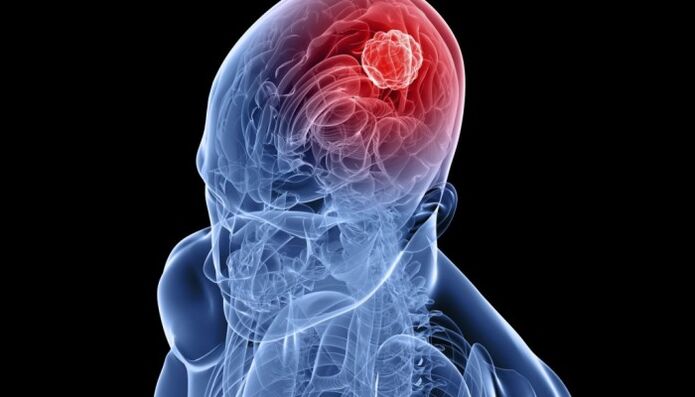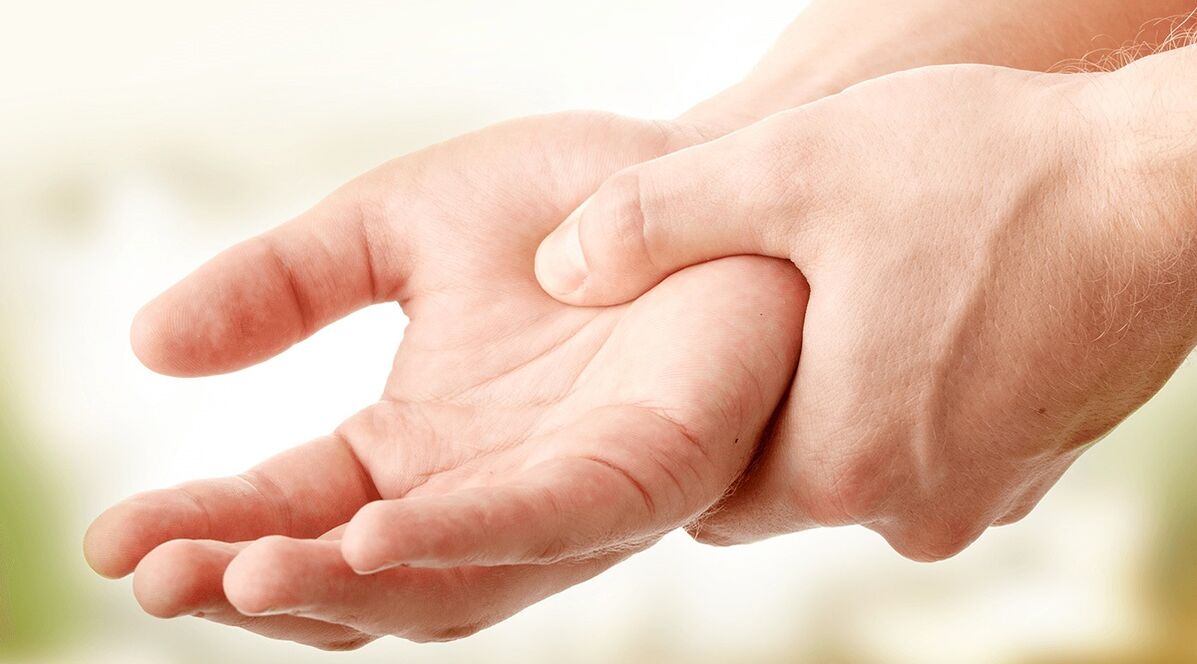When unpleasant sensations arise in a certain area, this is certainly a source of problems for the patient, but pain throughout the body brings much more suffering. In this case, even everyday activities are left in the background, as they become difficult to carry out.
Many people are familiar with the feeling of weakness, fatigue, and pain that interfere with an active life. Likewise, joint pain in muscles, bones or joints cannot be ignored. It must force the patient to make quick decisions in order to discover the reason and essence of other measures. But for that, you need to consult a doctor first.
causes
If muscles and joints throughout the body ache, first of all you need to find out what this is related to.
An extensive zone of such sensations is forced to push the patient and the physician towards the idea of systemic injury. One must look for the reason not in individual tissues of the musculoskeletal system, but in the functioning of the entire organism and its systems. At the same time, it is very difficult to understand what really hurts: muscles, bones or joints. These sensations are spread throughout the body and are not precisely localized. But despite this, there are states for which a similar situation is quite typical. This includes the following:
- Physical stress.
- Infectious diseases.
- Connective tissue pathology.
- Blood diseases.
- Tumor processes.
- Neurological problems.
As you can see, the pathology is quite diverse and serious. If you don't take into account the completely physiological reasons for muscle weakness and pain, then you need to be very careful about the likelihood of these diseases. A doctor's appointment is never superfluous.
It is possible to make an assumption about the source of pain in joints and muscles throughout the body after a clinical examination by a physician.
Symptoms

Any pathology has characteristic features. All manifestations must be considered, even if they are insignificant. To identify a disease that affects the condition of muscles and joints, it is necessary to analyze the patient's objective complaints and symptoms.
Since pain is the most common symptom, its possible characteristics should be considered:
- Paining, burning, cutting or stabbing.
- It is located in the area of muscles, bones or joints.
- It sits in the same areas of the body or is volatile.
- Permanent or periodic.
- Moderate, strong or weak.
It may be accompanied by feelings of weakness, fatigue or pain. If the cause of the pain lies in general ailments of the body, then surely other symptoms will be present, which will indicate the source of the problem.
physical stress

For starters, you must rule out a situation that almost everyone could face. Excessive physical activity can cause muscle tension, which affects sensations in different parts of the body. Pain and weakness are associated with accumulation of lactic acid in tissues and micro-injuries to fibers. Because of this, there is a sore throat, which goes away with time. It should be remembered that only the muscles are involved in the process and there should be no other symptoms.
If physical overload is excluded, you will have to look for more serious causes of pain.
Infectious diseases

Bone and muscle pain are familiar to anyone who has ever had respiratory infections. Even a commonplace ARI is accompanied by these symptoms. What can we say about a more serious pathology, such as flu, meningitis, hemorrhagic fevers, leptospirosis, Lyme disease. Flight pains are characteristic of brucellosis and epidemic myalgia. In many cases, these sensations are the result of microbial intoxication. Infectious diseases are accompanied by other symptoms:
- Fever.
- Coughing, sneezing.
- Rash.
- Nausea, diarrhea.
- Headache.
- General weakness.
Joint pain can even bother patients with liver damage - viral hepatitis. In this case, severity in the right hypochondrium, skin yellowing and decreased appetite are characteristic. we must not forget the possibility of parasitic invasions, for example, trichinosis, in which muscle pain has great diagnostic value.
The spectrum of infectious pathology is very broad, so it is necessary to timely identify the cause of pain in the body.
Connective tissue pathology

If muscles and joints ache, the patient should be examined to identify systemic diseases: lupus erythematosus, polymyositis, scleroderma, rheumatoid arthritis. They have an autoimmune nature and occur with damage to connective tissue, which is found in every system in the body. In that case, you should pay attention to the following features:
- Symmetrical damage to the joints of the hands with characteristic deformities - in rheumatoid arthritis.
- Butterfly-shaped skin redness - with lupus erythematosus.
- Weakness of limb and neck muscles - with polymyositis.
- Thickening of the skin on the fingers, mask-shaped face - with scleroderma.
One more disease with systemic manifestations must be mentioned - rheumatism. Although a microbial agent (streptococci) becomes a trigger, an autoimmune process develops in the future. It is for this disease that joint pain will be characteristic.
Connective tissue diseases are accompanied by damage to internal organs: heart, lungs, kidneys, as well as blood vessels and nervous system.
blood diseases

Diseases of the hematopoietic system are a common cause of bone pain. Unfortunately, most of them are malignant, so it is useful for everyone to know the characteristic signs of such a pathology. In addition to body aches, the following symptoms develop with leukemia:
- Temperature increase.
- Swollen lymph nodes.
- Bleeding from multiple locations.
- Pale skin.
- Enlarged spleen and liver.
- Infection tendency.
In addition, shortness of breath, general weakness, loss of appetite and skin nodules may occur. The acute form of leukemia occurs with pronounced manifestations and is seriously life-threatening in the absence of adequate treatment.
tumor processes

Pain in the bones, joints, or muscles of the entire body may appear in the framework of the paraneoplastic syndrome, which is characteristic of many malignant tumors. It develops due to metabolic, immunological and other disturbances associated with the primary process. Often seen with arthropathy or osteopathies, similar to several rheumatologic diseases. Similar signs appear long before the tumor process is detected.
In addition, bone pain can result from "cancer poisoning" seen in patients with advanced tumors and metastases. In addition to the indicated symptom, general disorders will prevail in the clinical picture of the disease:
- Great weakness.
- Weight loss, until exhaustion (cachexia).
- Lack of appetite, nausea.
- Skin pallor with grayish, jaundiced or bluish tint.
- Fever.
- Depression, irritability.
These signs significantly aggravate the patient's condition and adversely affect the prognosis of the disease.
More attention needs to be paid to detecting tumors at an early stage, which is only possible with regular preventive exams.
neurological problems

If the patient experiences pain in muscles, joints or bones, the problem may even be in the nervous system. Similar symptoms are often seen with polyneuropathy. The disease can have different locations, but the lower extremities are more susceptible to it. In these cases, the following symptoms are observed:
- Numbness, tingling, burning, "shivering".
- Decreased sensitivity.
- Change in severity of reflexes.
- Muscle weakness, hypotrophy.
- Skin thinning, hair loss, dryness.
Polyneuropathy can cause severe pain, with a significant impact on patients' quality of life.
Diagnosis

After a clinical examination, it is necessary to use additional methods that will help to establish the correct diagnosis. Given the wide range of possible pathologies, the clinician will need a variety of laboratory and instrumental tools. This includes the following:
- General analysis of blood and urine.
- Biochemical blood test (infectious antigens, rheumatic tests, tumor markers, acute phase indicators, liver function tests, etc. ).
- Bacteriological analysis of blood and body secretions.
- Bone marrow puncture.
- Magnetic and computerized resonance imaging.
- Neuromyography.
It is necessary to consult a rheumatologist, infectious disease specialist, oncologist, hematologist and neuropathologist.
A final conclusion about the origin of pain in bones or muscles can be made based on the results of a comprehensive examination.
Treatment
Once the diagnosis is established, other measures are determined by the physician. Therapeutic tactics will depend on the type of disease, its prevalence and the state of the patient's body. It is difficult to formulate a general therapeutic program for all diseases that may be accompanied by pain or pain in the joints, muscles and bones. It all depends on the specific situation, which dictates the use of conservative or operational techniques.
drug therapy

The mainstay of treatment for most diseases is the use of medication. It's hard to imagine modern medicine without them. A wide variety of drugs allow you to influence almost any mechanism of pathology development and its cause. With the advent of certain medications, it became much easier to treat serious illnesses.
Depending on the established diagnosis and clinical situation, the following medications can be used for pain throughout the body:
- Antibiotics and antiparasitics.
- Non-steroidal anti-inflammatory.
- Hormones (glucocorticoids).
- Cytostatics and immunosuppressants.
- Detox.
Many of the drugs have serious contraindications for neoplastic diseases. This applies to vitamins and metabolic agents. Its use can improve the progression of the pathological process. Obviously, the treatment complex may include additional medications that will affect the individual symptoms of the disease.
Medications must meet generally accepted standards of therapy and be prescribed by a physician only.
surgical treatment

Surgery may be indicated for tumors or blood disorders. In the first case, the pathological focus is removed along with the regional lymph nodes. Given the nature of the disease, subsequent appointment of radiotherapy is possible. With progressive leukemia in the context of conservative treatment, bone marrow transplantation is recommended.
Pain in the musculoskeletal and joint system, which covers most of the body, can be a serious concern. Early diagnosis and proactive treatment will help prevent complications and improve the prognosis of any disease.



































